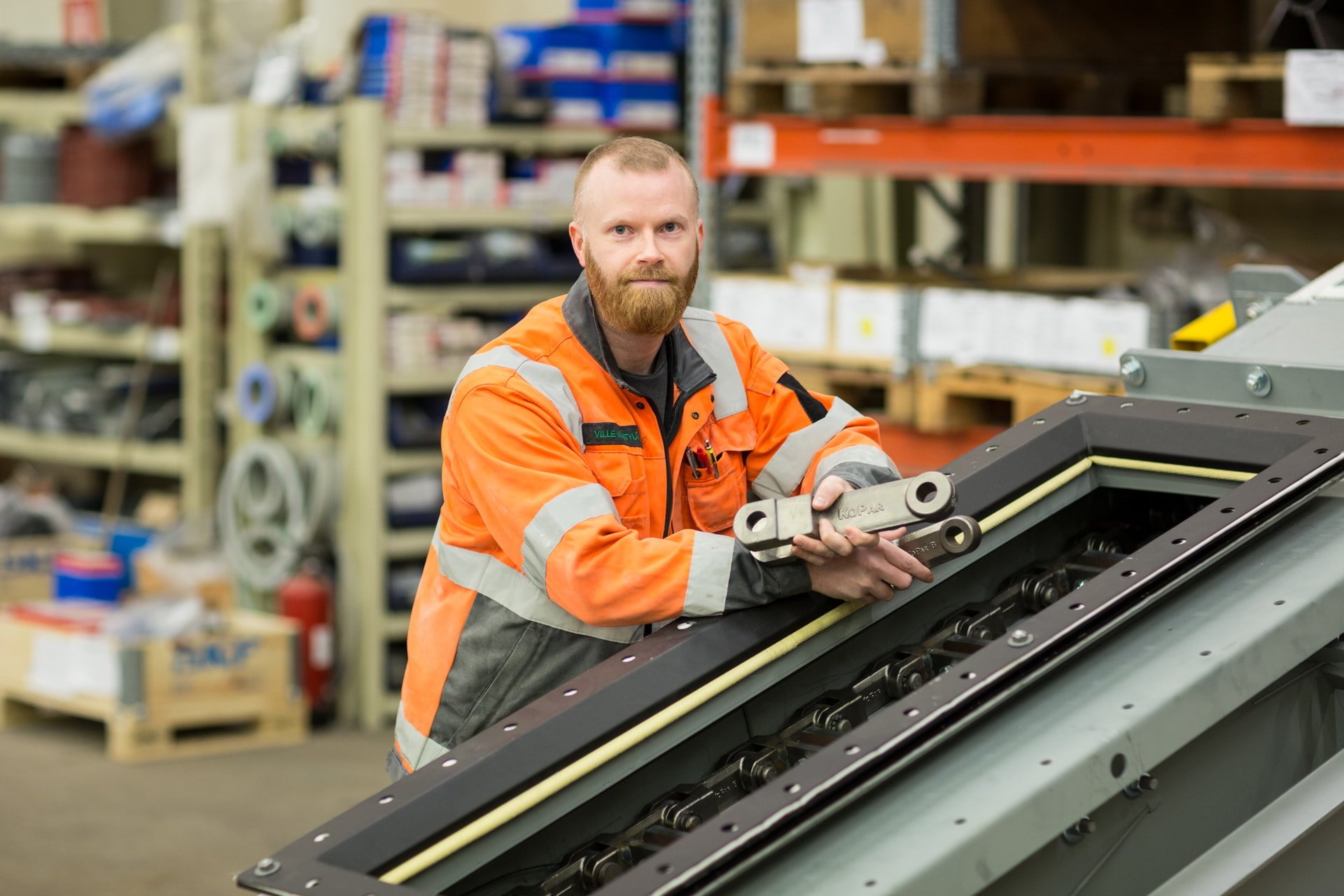The ash conveyor and the clinker conveyor are synonyms and have no concrete differences. They are devices designed to efficiently and safely transport hot ash in industrial environments. This article discusses the operation of the ash and clinker conveyors, their significance in industry, and Kopar's role in developing these systems. Readers can consider how these systems enhance industrial process efficiency and how they can help reduce environmental impact.
What is an ash conveyor?
An ash conveyor is a device specifically designed for transporting hot ash in industrial processes. Its primary purpose is to ensure that ash is transferred safely and efficiently from one place to another, which is essential in power plants and other industrial production facilities. The ash conveyor often operates in a closed system, helping to reduce dust and improve workplace cleanliness.
In practice, the ash conveyor is designed to withstand high temperatures and abrasive materials. It typically uses chains and conveyor systems made of durable materials such as steel, ensuring its durability and reliability. The ash conveyor is an essential part of the process, helping to manage and utilize production by-products.
The needs of various industries can vary, requiring the ash conveyor to operate in both horizontal and vertical positions. This versatility makes it a valuable tool that can adapt to different production and environmental requirements.
What is a clinker conveyor?
The clinker conveyor is synonymous with the ash conveyor and operates in the same context for transferring hot ash in industrial processes. The clinker conveyor is designed to withstand extreme conditions, such as high temperatures and abrasive materials, and its structure is simple yet effective, making it a reliable choice for a variety of applications.
The structure of the clinker conveyor is often modular, allowing it to be customized to the specific needs of different industrial plants. Its closed system reduces the spread of dust and splashes, enhancing workplace safety and cleanliness. This makes clinker conveyor solutions attractive, especially in space-constrained environments where efficient use of space is important.
The reliability and low maintenance requirements of the clinker conveyor make it a cost-effective solution for long-term use. Although the initial investment can be significant, the long service life and low maintenance costs of the clinker conveyor compensate for this over time.
How does an ash conveyor work in practice?
An ash conveyor consists of several technical components that together enable the safe and efficient transfer of hot ash. One of the key components is the conveyor chain, which moves the ash forward in a closed system. This chain is often made of specially durable steel that withstands high temperatures and abrasion.
The closed structure is an important part of the ash conveyor's operation, as it reduces the spread of dust and enhances workplace safety. Additionally, the ash conveyor can be equipped with a cooling system that helps control temperature and protects the conveyor itself from thermal effects.
The technical design of the ash conveyor ensures that it can operate in continuous use without significant interruptions. This is important for industrial facilities where production continuity is crucial. The ash conveyor is designed to require only minimal maintenance, reducing the risk of operational downtime and enhancing overall production efficiency.
Why is ash transfer important in industry?
Ash transfer is a critical part of many industrial processes, especially in power plants and metal refining, where large amounts of hot ash are produced. The importance of ash transfer is highlighted in production efficiency and safety, as proper execution reduces the risks associated with handling and storing hot ash.
A properly implemented ash transfer system improves plant energy efficiency and reduces environmental impact. This is achieved, for example, by utilizing energy from the ash or minimizing emissions from ash handling. Automation of ash transfer also reduces the risk of human error and enhances the comprehensive control of the process.
The sustainable development goals of industry increase the pressure to develop more efficient and environmentally friendly ash transfer solutions. This requires innovative approaches and continuous development, which is key to maintaining the competitiveness of industries.
How can Kopar assist in ash transfer?
Kopar has decades of experience in designing and manufacturing industrial material handling solutions, with a specialization in the development of ash conveyors. We offer customized solutions designed to meet the specific needs and requirements of our customers.
In the field of ash transfer, our solutions include both mechanical and pneumatic conveyor systems designed to optimize energy efficiency and reduce maintenance needs. Our goal is to help our customers improve the profitability and reliability of their production processes.
Innovation and continuous development are at the core of our operations, and we strive to constantly improve the performance and environmental friendliness of our products. At Kopar, we believe that high-quality solutions can promote the green transition of industry and reduce its environmental impact, which is important for achieving a sustainable future.

You have a challenge that needs solving?
Let us help! Contact us for more information about our products and services.
